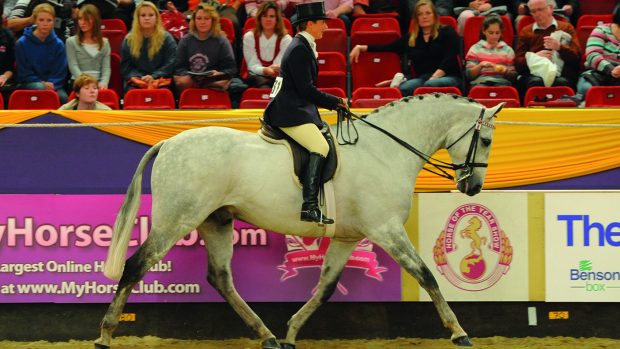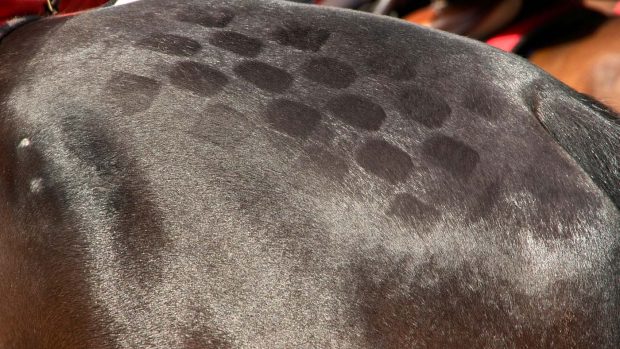Save those perfect square halts for individual ridden shows and dressage tests, says leading producer Allister Hood.
In the next part of our training series with the reigning Horse of the Year Show supreme horse champion, Allister collected the title in 2016 aboard Our Cashel Blue, he explains what the judges want to see when you stand your horse up for the conformation assessment — and how to correct a horse when necessary.
How to stand up correctly
To assess a horse’s conformation, a judge needs to be able to see all four legs – with the handler standing in front so as not to block the view.
When the judge is on the nearside, the nearside foreleg should be slightly in front of the offside leg. The nearside hindleg should be slightly behind the offside one.
Remember that the foreleg on the judge’s side should not be placed behind the horse’s shoulder. It puts the horse off balance and looks awkward.
Six ways to banish mistakes
• Tiny changes make a big difference. Getting your horse to take half a stride rather than a full one will often perfect the picture.
• Don’t keep fussing, particularly with youngsters. If you get it nearly right and the judge has a clear picture, leave it.
• Don’t use your stick to poke your horse in the shoulder or on the withers because you’ll just aggravate him. Use your voice and/or gentle pressure on the nose or bit.
• Your voice is a great aid. Commands should be quiet but firm.
“I tell all my horses to ‘stand up,’” says Allister.
• If your horse is fidgeting, look him in the eye and say: “don’t.” This, together with calm but clear handling and body language, will help get his attention on you.
• Your horse must be balanced. If he has good limbs but stands with his hocks or knees in or out, it can give the impression that this is a conformation fault.
Top tip: manners matter
Allister loves the natural rhythm and cadence shown by Sam Weight’s 12.2hh yearling traditional gelding, Kimico Incredible Inc. This clinic was the pony’s first outing and he wanted to stand too close to Sam when she stood him up.
Continued below…
Like this? You might also enjoy reading these:
Allister Hood: 3 ingredients for a trot-up that will impress the judge
“Put him in a little rubber bit rather than your show halter,” advises Allister. “If he gets in the habit of being cheeky, as he gets bigger it’s more difficult to sort out. It’s better to get more control now than have to be harder on him later on.”
Allister was speaking at a British Skewbald and Piebald Association clinic at Barleylands EC, Essex, on 12 March. Words by Carolyn Henderson.
Don’t miss H&H’s showing special (16 March issue), which is on sale now and jam-packed with features, training and interviews to help you prepare for the season ahead.





